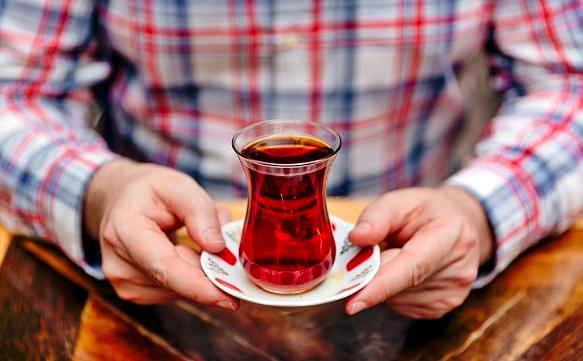
Turkish Tea Culture, which has a history of 5000 years, has entered the life of the Turks late, even if it is clean. In addition to drinking tea throughout the day, we cannot ignore our contributions to the cultural history of tea with our unique brewing method, thin-waist glass glasses, and liming tea. The first of these is that we skillfully and beautifully analyze the condition that the teapot should be hot, which is one of the indispensable rules of good tea brewing, by placing the teapot on the teapot.
Although Turks knew tea before coming to Anatolia; Come to Turkey's tea but is based on a few hundred years ago. Tea drinking has become widespread in Anatolia since the 19th century.
The following story is told about the spread of tea among the Turks:
One day Hodja Ahmet Yesevi becomes a guest of one of the Turkestan squares at the border of Hitay. Because the weather was very hot that day, he was very tired. The wife of the Turkman neighbor, whom he is a guest, is about to give birth. Turkmen asks Hodja Ahmet Yesevi to pray, and Ahmet Yesevi prays. By Allah's leave, the request of a Turk will be immediate. Turkmen would be very pleased with this situation. Tea, which is an important treat of the region, is brought by boiling. When Hodja Ahmet Yesevi tea is drunk hot and hot, he sweats and his tiredness disappears. Then, he prayed, "This is a healing thing, give your patients a drink of it so that they can find healing. May Allah give it a favor until Doomsday." After that, tea started to be used by all Turks and became a healing drink.
Tea has an important place in folk culture and ethnography. Tea has strengthened its place in our social life today, and it lives with its culture. Tea, which is in our lives from breakfast until late at night, has led to the emergence of different cultural values.
About tea; Rhymes, riddles, mania and folk songs, hymns, legends, jokes, traditions and customs are cultural values in themselves. Even though the word tea is in Chinese, it has found its place in dictionaries and idioms and has reached a large number of words and phrases. Tea, Tea Garden, Tea Glass, Brew Tea, Teacup, Tea Sapling, Tea Seedling, Teaspoon, Tea Set, Tea-giving, Tea Break, Tea Shop, Teapot, Teapot, Tea Money, Teahouse, Teapot, Teahouse, Tea Pot next to the words; Rabbit Blood has led to the emergence of idioms such as Tea, Drinking Tea, Cracking Tea, Slurping Tea, Treating Tea, and Pasha Tea.
Tea culture, from its cultivation to its preparation and consumption, has also revealed a tea ethnography. Scissors for cutting tea, baskets, boxes, teapots, samovars, tea cauldrons, glasses, cups, spoons, trays, etc. they are all ethnographic substances formed around tea culture.
The most important of these is the samovar culture, which we cannot distinguish from the tea itself. The samovar has been widely used in Central Asia since the 19th century. With the legacy of Ahmet Yesevi, tea is believed to be healing, and samovar has become believed to be a healing distributor. It is seen as a life, affectionate and remedy for troubles. It was believed so much that samovar gave healing, that samovar was boiled and tea was drunk in order to comfort people at the exit of the bath and at the Mevlid. Samovar occupies a place in our literature by itself. Samovar has been likened to a hospital.
Until yesterday, the coffee and tea gardens of my country had admired "cafes" and removed the glass glass and started to serve in porcelain or glass cups. And of course, tea bags entered our lives, in addition to "cafes", our century-old tea brewing methods were immediately put on the shelf in some homes and teapot bags were served in cups. Fortunately, it is now beginning to be understood that offering tea bags in porcelain / ceramic cups to tourists is not a very smart thing. We do not know if the news that "Greeks give tea in glass cups with thin waist" had an effect on this, but recently, starting from "cafes", on the insistence of tea lovers, glass glasses have been used in tea gardens, even if not ideally sized.
In addition to drinking tea throughout the day, it is undeniable that tea has been added to the history of culture with our own brewing method, thin-waist glass glasses, and kıtlama tea, especially if it is remembered that it also entered our epics, folk songs, hymns and poems ...


